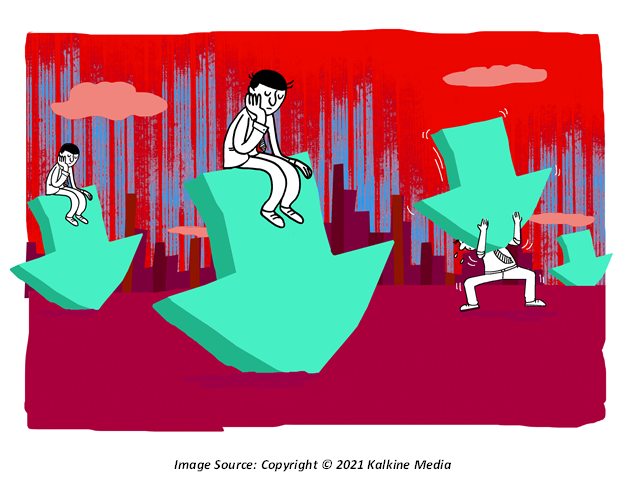Highlights
- Speculation is rife on whether Australia could undergo a spell of stagflation, given the ongoing inflationary pressures.
- Economies going through stagflation observe increasing unemployment figures and low GDP growth rate at a time of rising inflation.
- What provides some relief is the fact that the labuor force has moved away from a widespread culture of unions, indexation clauses, etc.
The pandemic has left behind an unusual trail of economic events that have become a cause of global concern. However, some respite was offered during the last few months when an overall improvement in statics was observed. As the Australian economy reopened and business went back into full gear, it was expected that the economy would once again bounce back to pre-pandemic levels. However, recent estimates suggest otherwise.
Speculation is rife on whether Australia could undergo a spell of stagflation, given the ongoing inflationary pressures. The current predictions for future prices in the country have reached unprecedented levels, showing once again, how the pandemic has left a string of unexpected changes in the economy.
DO NOT MISS: What to expect from RBA policy meet
Before delving into the possibility of a stagflation seeping into Australia, here is a closer look at the phenomenon and what it means for an economy.
Stagnation and inflation or simply, stagflation
On bifurcating the word stagflation into “stagnation” and “inflation”, the meaning of the term becomes self-explanatory. In the scenario of stagflation, major economic indicators remain fixated at a particular level, with no signs of growth in sight. Economies going through staflation observe increasing unemployment figures and low GDP growth rate at the same time. In the backdrop of this are rising inflation rates, creating panic among individuals.

The term was first coined in the 1970s, when an economic crisis had hit the global economy, impacting Australia as well. At that time, the phenomenon come as a surprise to even seasoned experts in the field of economics, because of the longstanding theory given by the Phillips curve.
Phillips curve suggests that at a time, out of unemployment and inflation, only one indicator can show a rise, meaning, for inflation to drop, unemployment would show a definite increase and vice versa. Thus, when both unemployment and inflation rose, experts were baffled and could not understand how to proceed.
GOOD READ: Has COVID-19 pandemic derailed Australia’s economic growth?
Learning from the past
Current expectations of building stagflation stem from the resemblance of the ongoing economic conditions to those seen in the 1970s before the onset of stagflation. Economies recovering from the aftereffects of the pandemic are seeing rising inflationary pressures, majorly riding on the backs of increasing demand and boosting consumer confidence.
Current demand supply dynamics leave behind a concerning impression of what is to come next. In addition to booming demand, the lack of a proper supply chain has further weakened the ecosystem, causing prices to surge to exceptional levels. Australia’s red hot property market is also an example of what booming demand and inadequate supply can do to a sector.
The current picture of unemployment over a backdrop of rising prices, seems worse than ever seen before. Despite that, what provides some relief is the fact that the labuor force has moved away from a widespread culture of unions, indexation clauses, etc. These arrangements were far more common during the 1970s and 1980s.
In a nutshell, stagflationary fears for Australia might be valid, however, it is also possible that current inflationary pressures persist for only some time before some steam is blown off in the coming months. Additionally, increasing vaccination figures and reinstated business activity should definitely help bring the economy back on its feet.



